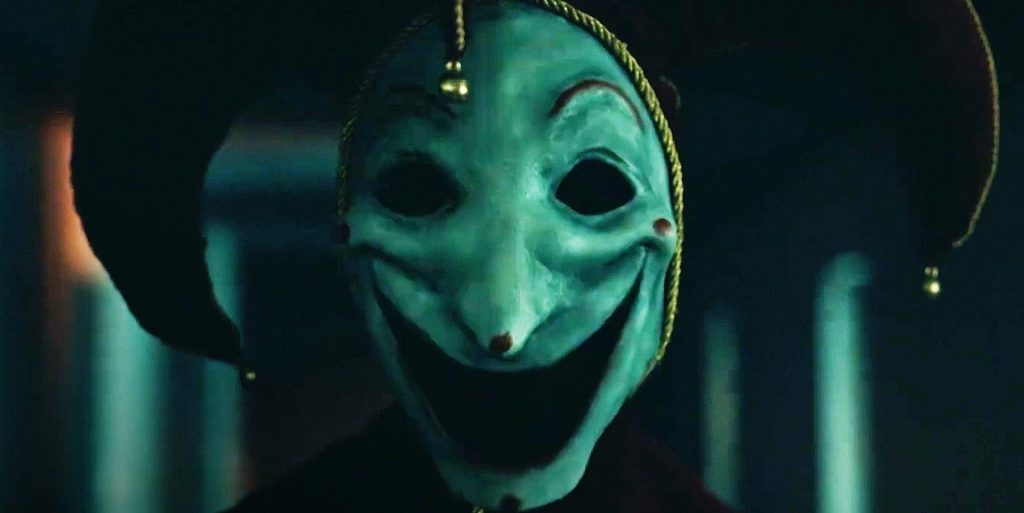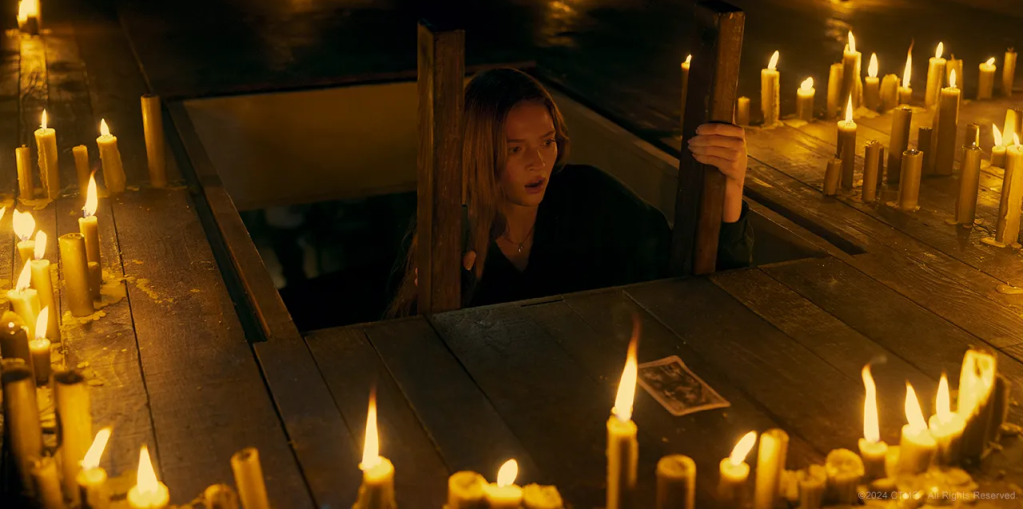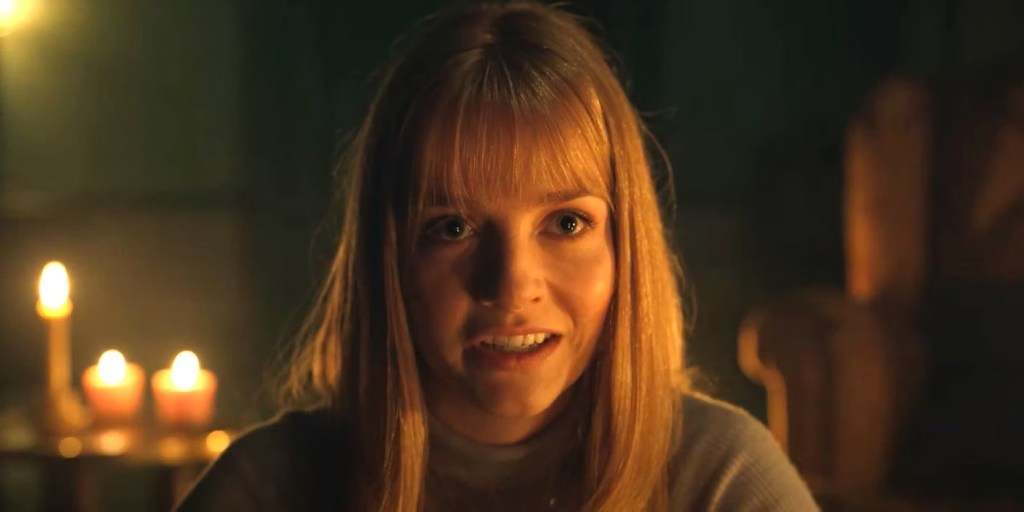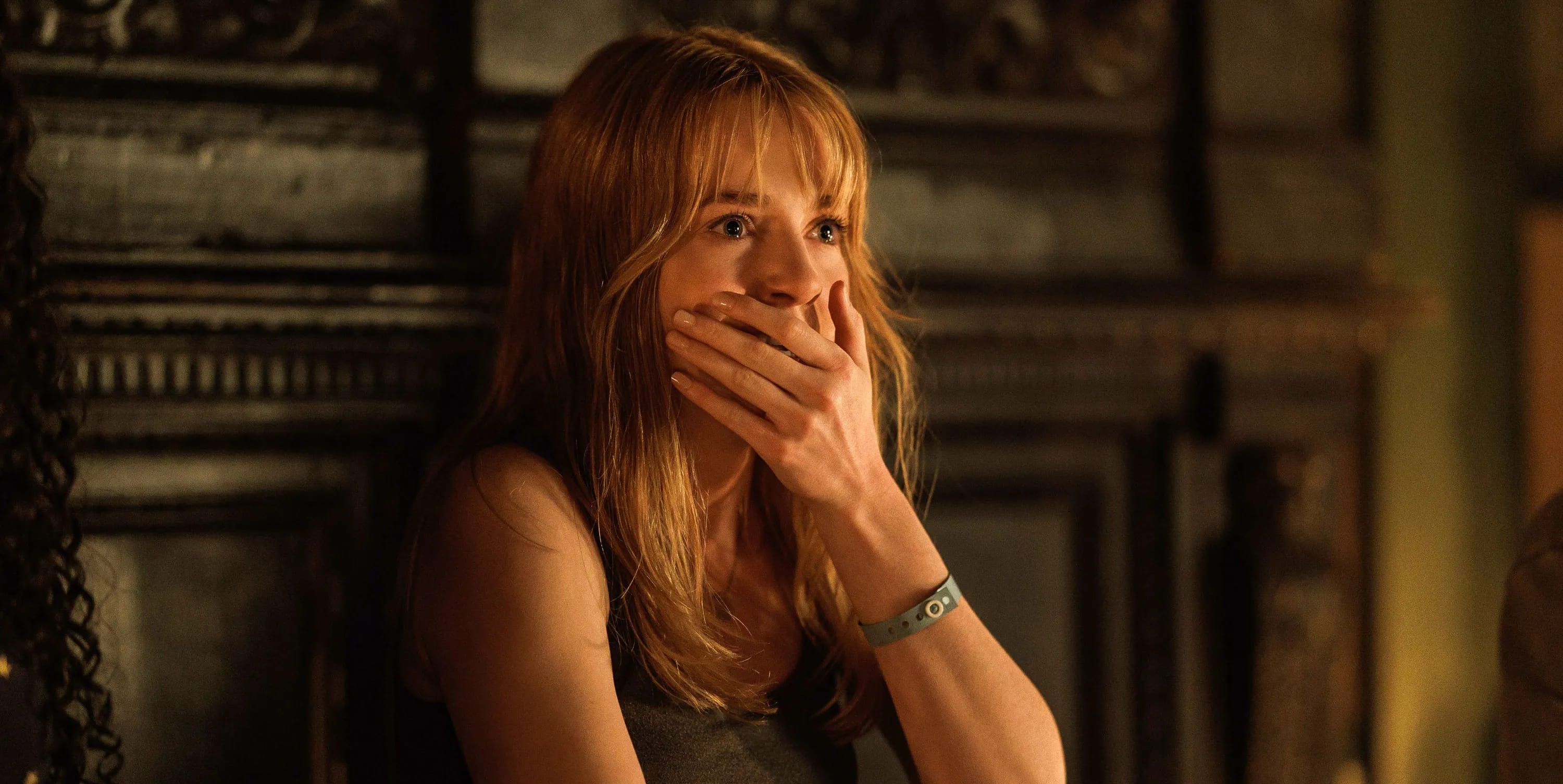In their directorial debut, ‘Tarot,’ Spenser Cohen and Anna Halberg delve into a world of supernatural horror where astrology and tarot cards combine in an occult mystery involving gruesome murders. The film follows a group of seven college students — Haley, Grant, Paxton, Paige, Madeline, Lucas, and Elise — who discover an ancient tarot card collection with a strange zodiac design in a mansion in the Catskill Mountains. While celebrating the birthday of Elise, the crew decides to do a reading to see what the future holds for them, headed by Haley. However, when they return home, each group member is haunted by a mysterious figure that eerily resembles their card fortunes.
The supernatural horror presents a chilling tale of a college night out gone wrong when forces beyond the veil start haunting the unwitting members whose fates have already been divined. Consequently, the narrative examines the push-and-pull nature of the preordained versus the uncertain. With terrifying entities from the tarot card pursuing the group, they have to probe into the history of the practice and avail the help of an experienced astrologer to battle that which they have little knowledge about. Thus, the genesis of ‘Tarot’ and its inspirations are brought to the fore while exploring the origin of the plot.
Tarot is a Loose Adaptation of a Slasher Novel
‘Tarot’ is a fictional horror story written by director duo Spenser Cohen and Anna Halberg that was initially pitched as an adapted work. The filmmakers were initially tasked to base their story on the 1992 slasher-thriller novel, ‘Horrorscope,’ by Nicholas Adams, which was also the original title of the production. It was later renamed ‘Tarot’ when Cohen and Halberg decided to move away from the book’s storyline because they wanted to portray something supernatural instead of the serial killer roots of Adams’ work. To preserve their unique vision, the directors respectfully opted not to read the novel as it might clash with their version of the story.

Explaining their thought process, Halberg told The Hollywood Reporter, “Sony pitched the concept of the book, but it wasn’t something that sounded particularly interesting to us. We were told that it was a slasher story, and while we enjoy watching those movies, we were more interested in telling a story that was supernatural. So we went away and came up with an original horror concept that blended horoscopes with tarot cards.” Therefore, while the film is technically an adaptation of ‘Horrorscope,’ it ultimately veers away from the source material to present a fresh perspective that is more supernatural in approach.
The Directors Probed Into Astrology and Tarot Cards to Weave the Narrative
Spenser Cohen and Anna Halberg wrote the film’s screenplay during the COVID-19 pandemic. They revealed that the uncertainty of those times forced many of their friends to dive into astrology and Tarot reading to glean insight into their future. The pair were intrigued by these practices as they spoke to a more profound insecurity lying within people with regard to how things might pan out. Consequently, they were able to alight upon the central theme of the story — fate versus free will — which allows a discussion that is more prescient and more prominent in people’s lives. The duo extensively researched the history of astrology and Tarot readings for the film.

In an interview with Script Magazine, Cohen said, “We were intrigued by just how far back astrology goes. Back to the earliest civilizations, people looked to the stars for answers. It’s crazy that even today we’re still doing that and it’s a big part of the cultural zeitgeist. Tarot goes back hundreds of years. Its beginning is a little murky. We read some estimates that it might be the 1300s. 800 years later and we’re still doing it and it’s popular.” On a similar theme, Halberg added, “It’s so interesting that tarot evolved into this powerful tool for divination, self-reflection, and for people to find clarity about the future.”
While they were prompted to make a bleak narrative, they also wanted to recapture the nostalgia and vibe of movies like ‘Jurassic Park’ and ‘Poltergeist,’ which they grew up watching as kids. Cohen reasoned that the film’s tonality would be essential in perfecting the mix between out-and-out horror and a fun narrative brimming with emotion. “When we set out we wanted to make a film that felt like a mix between James Wan and Stephen Spielberg. When it’s scary, it’s scary. When it’s fun, it’s fun. And in between there’s suspense, great characters, and emotion. That Ewas what we set out to do before we wrote a single word,” he said.
A Tragedy From the Co-director’s Past Inspired a Core Element in Tarot
For the most part, ‘Tarot’ is a fictional narrative that does not draw specific inspiration from any real-life events. However, at the heart of the film is Haley’s backstory of losing her mother to an illness that she had no control over. The pain and helplessness of her death drive the character, and it was directly plucked from Spenser Cohen’s personal experience. The director said, “My mom was sick when I was growing up, and she passed away when I was in my early 20s, which is close to the same age as Haley in the film. We’re always trying to make each story we tell feel personal, and that particular storyline was our way of putting an emotional stamp on the movie.”

Thus, an eclectic blend of a source novel, astrology, Tarot readings, occultism, and elements drawn from Cohen’s past forms the tapestry of exploration in Tarot. While the film may move into impossible territory, it is steeped in various real-life inspirations that ground its horror and make it feel believable when the supernatural aspects meet the mundane in a clash of known versus unknown.
Read More: Best Horror Movies on Netflix


You must be logged in to post a comment.